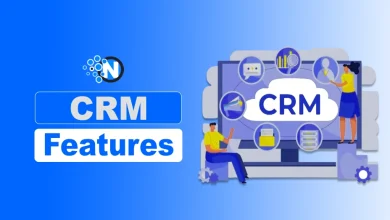What is Agile? Key Benefits of Using the Agile Methodology in Your Business
Agile methodology has gained popularity among organizations in recent years, revolutionizing the way businesses approach project management and development. By adopting the Agile practices, companies can enhance their efficiency, productivity, and, ultimately, their success in today’s rapidly evolving market.
This blog post will explain what Agile is and the key benefits it offers to businesses of all sizes.
What is Agile?
Agile is a project management approach that emphasizes flexibility, collaboration, and iterative development. At start, it was originated in the software development industry but now has been adopted by different industries worldwide. Unlike traditional waterfall approaches, where projects follow a linear sequence of phases, Agile promotes an incremental and iterative approach.
The Principles of Agile
Agile methodology is based on a set of principles outlined in the Agile Manifesto. These principles prioritize individuals and customer collaboration, working software, interactions, and responding to change. Agile teams value customer satisfaction, continuous improvement, and delivering high-quality products or services.
Agile vs. Traditional Project Management
Agile methodology differs from traditional project management approaches in several ways. Traditional methods focus on detailed upfront planning, whereas Agile encourages adaptation and flexibility throughout the project lifecycle. Agile projects are divided into short iterations called sprints, allowing for frequent feedback and adjustments.
Benefits of Agile in Business
1. Improved Flexibility
Agile enables businesses to quickly adapt to changing market conditions and customer needs. Its iterative approach allows for regular feedback and adjustments, ensuring that projects remain aligned with evolving requirements.
2. Enhanced Collaboration
Agile promotes cross-functional teams and encourages close collaboration between team members, stakeholders, and customers. This collaborative environment fosters better communication, knowledge sharing, and problem-solving, leading to more innovative and successful outcomes.
3. Faster Time to Market
By breaking down projects into smaller, manageable increments called “sprints,” Agile enables businesses to deliver valuable features or products more rapidly. This iterative approach reduces time wasted on unnecessary tasks, allowing businesses to seize opportunities and gain a competitive edge.
4. Increased Customer Satisfaction
Agile places a strong emphasis on customer collaboration and involvement throughout the development process. By continuously gathering feedback and incorporating it into subsequent iterations, businesses can ensure that the final product meets or exceeds customer expectations, resulting in higher levels of customer satisfaction.
5. Better Adaptability to Change
Agile embraces change as a natural part of the development process. It provides the flexibility to incorporate new requirements, address emerging issues, and respond to market shifts effectively. This adaptability allows businesses to stay ahead of the curve and deliver solutions that meet the ever-changing needs of their customers.
6. Reduced Risks
Agile mitigates risks by breaking down projects into smaller, manageable iterations. By focusing on delivering incremental value and regularly assessing progress, businesses can identify and address potential issues early on, minimizing the impact on project timelines and budgets.
7. Higher Quality Deliverables
Through its iterative approach and continuous feedback loops, Agile places a strong emphasis on delivering high-quality products or services. Regular testing, inspection, and adaptation help identify and resolve defects, resulting in superior deliverables that meet or exceed customer expectations.
8. Continuous Improvement
Agile promotes a culture of continuous learning and improvement. Through regular retrospectives and feedback loops, teams can identify areas for enhancement and implement changes to optimize their processes and deliver better outcomes in future iterations.
Implementing Agile in Your Business

To successfully implement Agile methodology in your business, consider the following key aspects:
Assembling Agile Teams
Form cross-functional teams that possess a diverse range of skills and expertise. Each team member should understand Agile principles and be committed to collaboration and continuous improvement.
Agile Project Management Tools
Utilize Agile project management tools to facilitate efficient project planning, task management, and communication within teams. Popular tools include Jira, Trello, and Asana.
Continuous Iterations and Feedback
Break projects into smaller iterations and conduct regular reviews and retrospectives. Encourage open communication and feedback from team members and stakeholders to drive continuous improvement.
Agile Metrics and Performance Tracking
Implement relevant metrics to track project progress, team performance, and product quality. Metrics such as velocity, burndown charts, and customer satisfaction ratings provide valuable insights for optimization.
Overcoming Challenges in Agile Adoption
Implementing Agile methodology may present some challenges. Here are a few common obstacles and strategies to overcome them:
Managing Scope Creep
Clearly define project scope and prioritize deliverables. Regularly review and adjust scope as needed while ensuring stakeholders are involved in decision-making processes.
Balancing Priorities and Resources
Effective resource management and prioritization are essential in Agile. Continuous communication, stakeholder involvement, and regular reassessment of priorities help maintain project focus.
Stakeholder Involvement and Buy-In
Engage stakeholders from the beginning and ensure their active participation throughout the Agile adoption process. Address concerns, clarify expectations, and demonstrate the benefits of Agile to gain buy-in.
Agile Challenges
Implementing Agile methodology in an organization can come with certain challenges. While Agile offers numerous benefits, being aware of these challenges can help organizations navigate through them effectively. Let’s explore some common Agile challenges:
Cultural Resistance
Challenge: One of the significant challenges in Agile adoption is cultural resistance. The existing organizational culture may be resistant to change, making it difficult to transition to Agile practices.
Mitigation: Addressing cultural resistance requires effective change management. Provide clear communication about the benefits of Agile, encourages a culture of transparency and collaboration, and involve key stakeholders throughout the process. Encourage open dialogue, provide training and support, and lead by example to help the organization embrace Agile values and principles.
Lack of Experience and Understanding
Challenge: Many organizations face challenges when team members lack experience or understanding of Agile methodologies and practices.
Mitigation: Invest in training and education to build Agile knowledge and skills within the organization. Offer workshops, certifications, and coaching sessions to help team members understand Agile concepts, roles, and responsibilities. Encourage continuous learning and provide resources for ongoing development.
Organizational Structure
Challenge: Traditional hierarchical organizational structures may hinder the implementation of Agile, as they often prioritize top-down decision-making and rigid reporting lines.
Mitigation: Consider adopting a more flexible organizational structure, such as cross-functional teams or self-organizing teams. Empower teams to make decisions, promote autonomy, and encourage collaboration across different departments and roles. Align the organizational structure with Agile principles to enable agility and responsiveness.
Resistance to Change
Challenge: Resistance to change can arise from various stakeholders within the organization, including team members, managers, or executives.
Mitigation: Communicate the benefits of Agile and address concerns or misconceptions about the change. Involve key stakeholders early in the process, provide opportunities for them to contribute to decision-making, and address their questions and doubts. Create a supportive environment that encourages experimentation, learning from failures, and continuous improvement.
Scaling Agile
Challenge: Scaling Agile from a single team to the entire organization can be complex and challenging.
Mitigation: Implement frameworks and practices specifically designed for scaling Agile, such as Scaled Agile Framework (SAFe) or Large-Scale Scrum (LeSS). These frameworks provide guidance on coordinating multiple teams, aligning objectives, and ensuring collaboration and communication across the organization. Adopting appropriate Agile scaling practices can help organizations achieve consistency and efficiency at a larger scale.
Conclusion
Agile methodology in processes and operations provides businesses with a flexible and iterative approach to project management, enabling them to adapt quickly, deliver high-quality products, and improve customer satisfaction. By embracing Agile approach, companies can improve collaboration, increase overall productivity, and gain a competitive edge in this dynamic business landscape.





